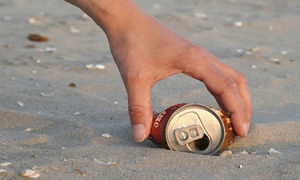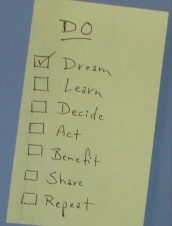 I know you may seriously be wondering what kind of spring cleaning bug I’ve caught, but
I am in love with our new vacuum cleaner!
I know you may seriously be wondering what kind of spring cleaning bug I’ve caught, but
I am in love with our new vacuum cleaner!
Here’s the back story:
Hubby and I bought a cheap Hoover when we moved in together just shy of ten years ago. It was a pretty momentous step in our relationship, as he insisted that we purchase it together…it may as well have been a proposal! So while it was never anything special, it got the job done.
But for the past two years our vacuum has teetered on the edge of the dumpster, and I was glad to see it get through the holidays in tact.
So, I wasn’t shocked to come home and find it on front porch in pieces (yes, I’m lucky enough to have a Hubby who vacuums!).
There have been a few “Green” vacuum cleaners to hit the market recently, and I looked into these models:
Yet, I didn’t want our decision to be entirely driven by eco-marketing. Our criteria for a new vacuum were pretty simple:
-
Longevity – buying things that are built to last means less waste and resources
-
Local – we wanted to support the local economy (Stark’s)
-
Repairs & Recycling – the shop we chose also repairs and recycles vacuum parts
-
Responsible company – while Simplicity isn’t big into eco-marketing, they are all about quality. Machines are American made which ensures better wages and some environmental standards, plus it didn’t have to be shipped from Asia.
Plus, these are some of the whistles that sold us on the model we bought: HEPA filters, cloth filters, best for hard wood floors, very quiet, compact for carrying up/down stairs, adjustable suction, on/off brush roller, horse hair brushes, retracting cord…and yes, our BigGuy thinks its the new family toy, and yes, the best part is that Hubby still does the majority our vacuuming, and no, it doesn’t hurt that it’s my favorite color! 🙂
Lastly, while it wasn’t a cheap disposable vacuum cleaner, it didn’t entirely break the bank. We bought our new vacuum (Simplicity Snap) for $360. For a purchase that we hope will last us at least ten years, it’s worth the price. What’s next? We’re hoping to repair our clunker before donating it, and then play when the vacuum some more…
Do you pay for quality on long-term purchases? Will you buy an “eco-vacuum”?
~*~*~*~*~*~
Sustainable Family Finances
The story of a family creating an abundant and sustainable life.




